Abstract
A study was made of the growth of three strains of non-cholera vibrio in a range of foodstuffs and of the effect of temperatures and pH on their ability to grow. Growth was tested at 4 degrees, 10 degrees, 22 degrees, 30 degrees, 37 degrees and 43 degrees C in a range of foods likely to be incorporated into cold hors d'oeuvres, e.g. egg, cream, rice, cold meat, seafood, aspic and mayonnaise. Non-cholera vibrios grew well in all these foods except mayonnaise, the rate of growth increasing with increased temperature of storage. At acid pH values the organisms died or grew very poorly but growth improved as the pH became more alkaline. None of the three strains showed any resistance to heat, an initial inoculum of greater than 10(7) organisms/g was reduced to less than 100 organisms/g in 2--3 min at 55 degrees C.
Full text
PDF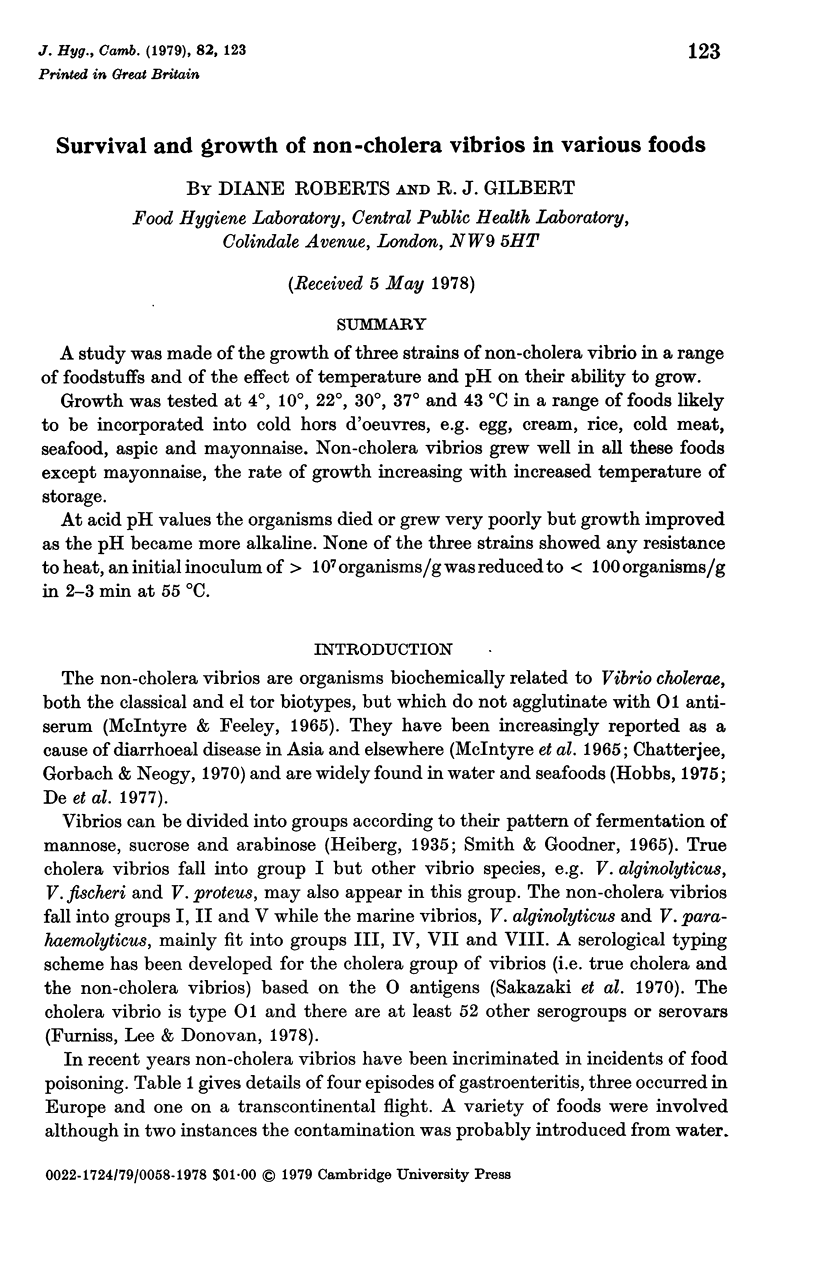
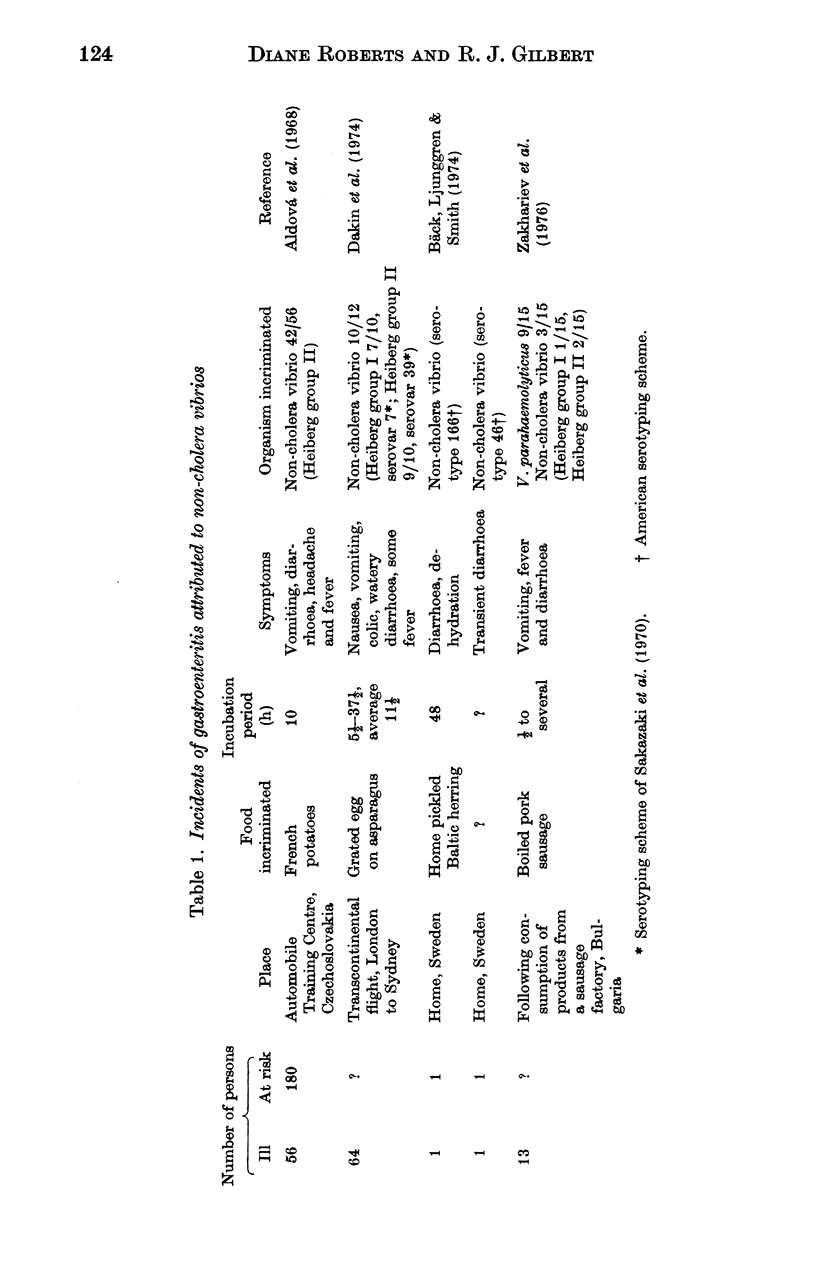
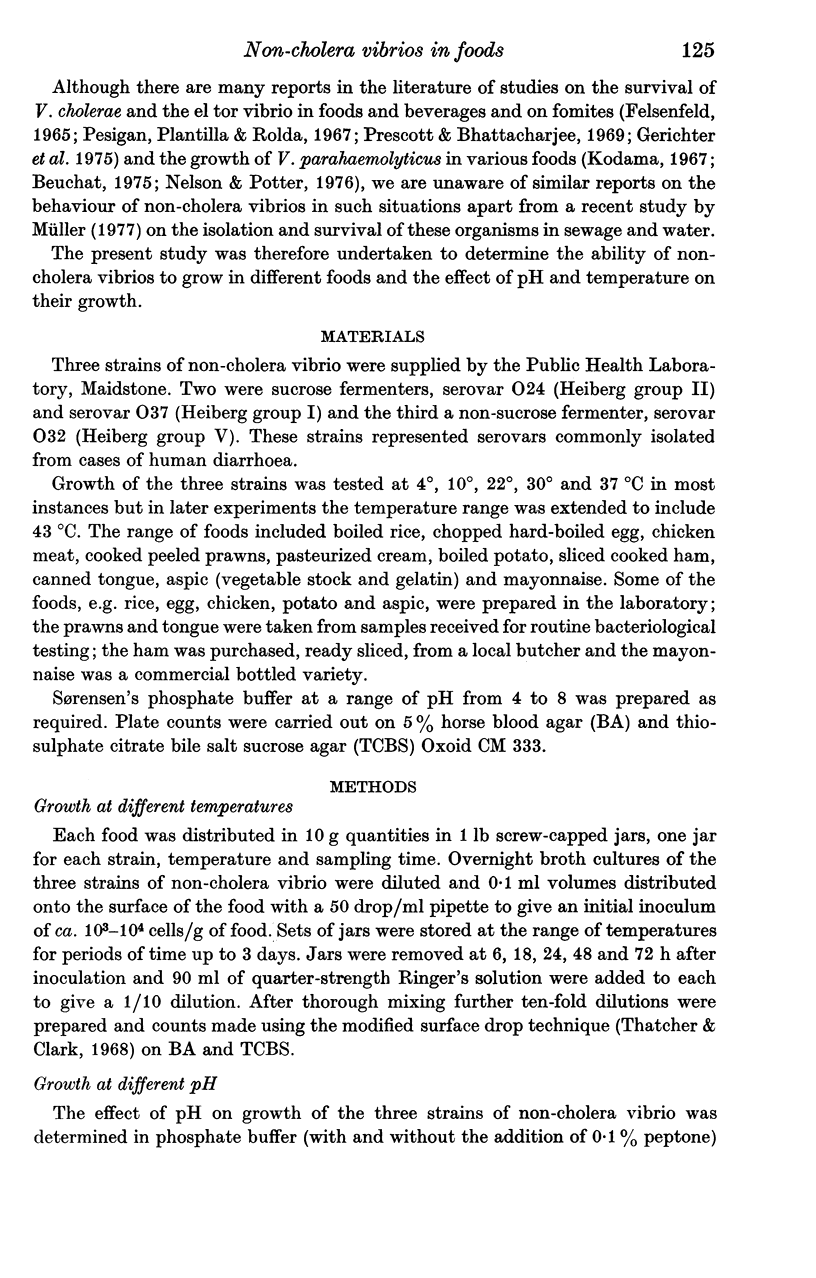
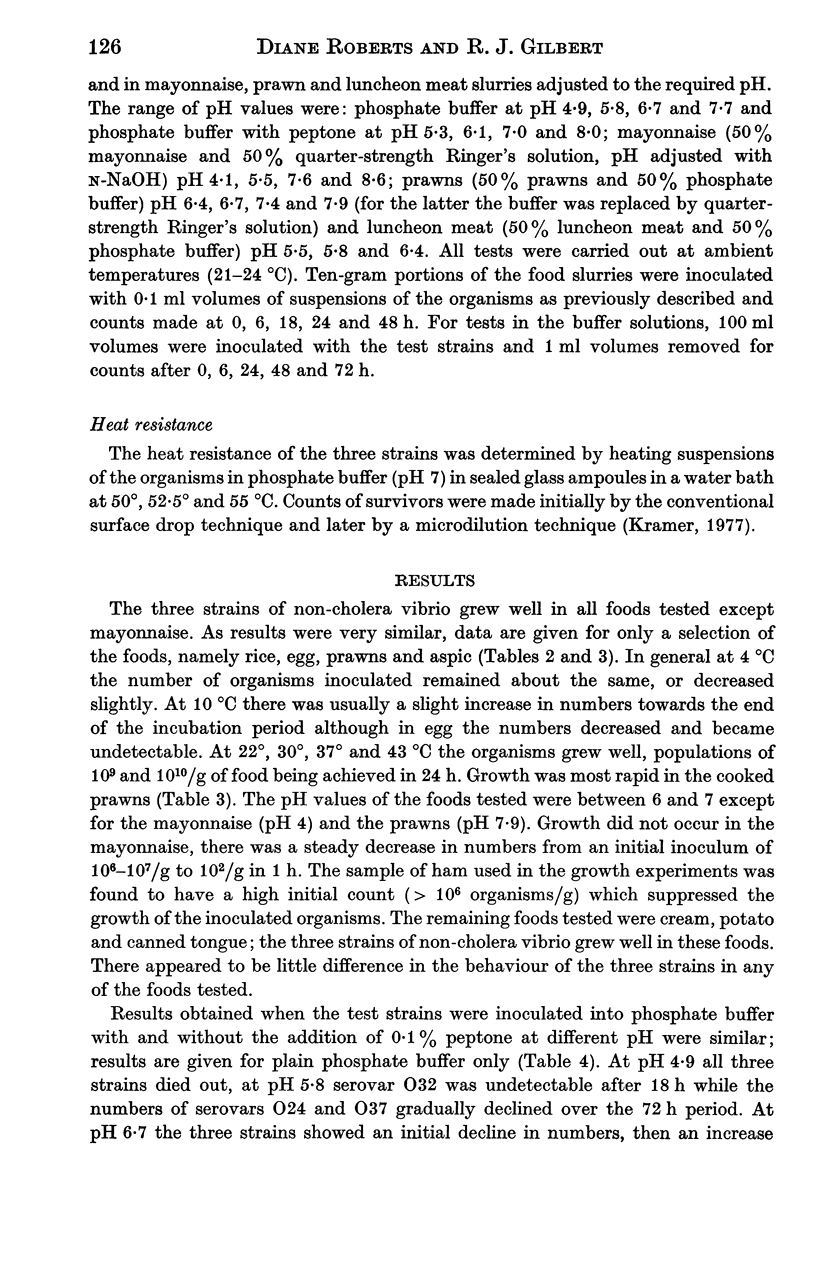
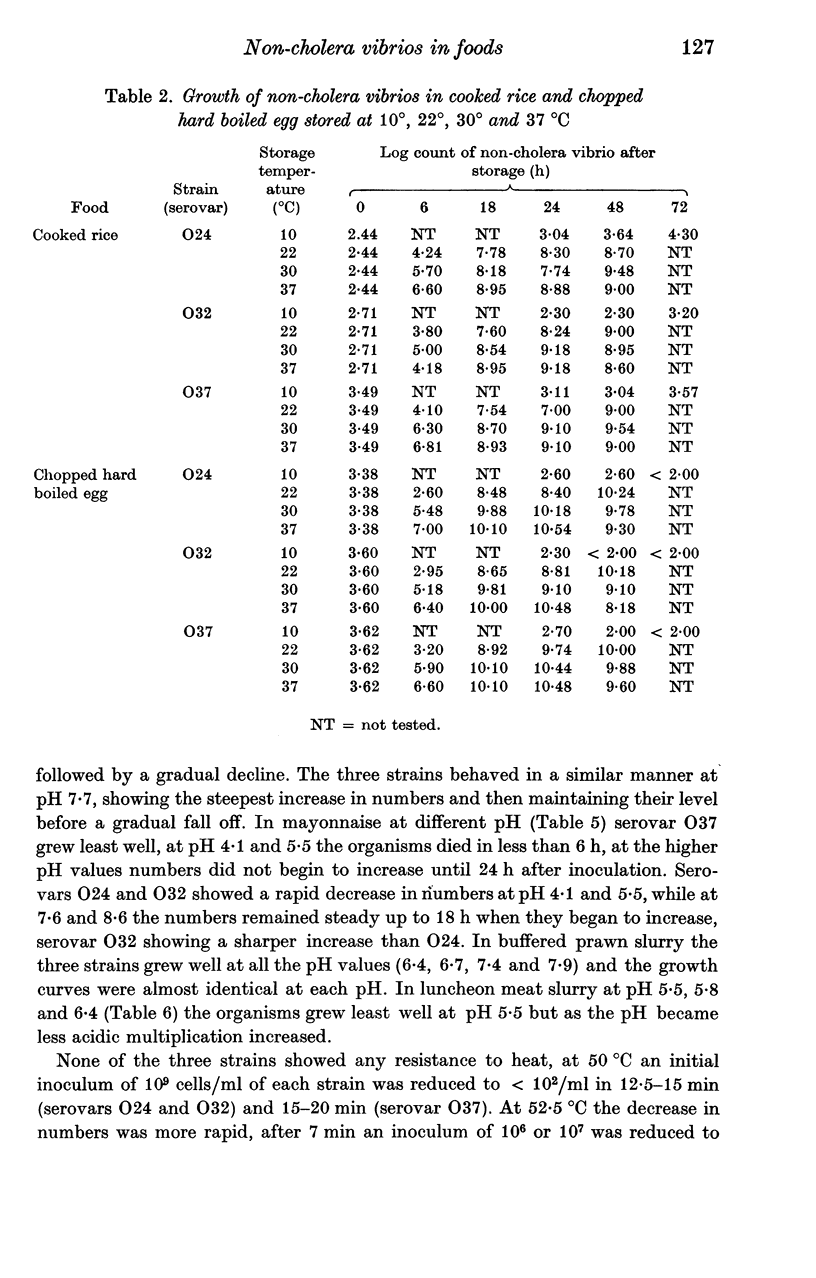
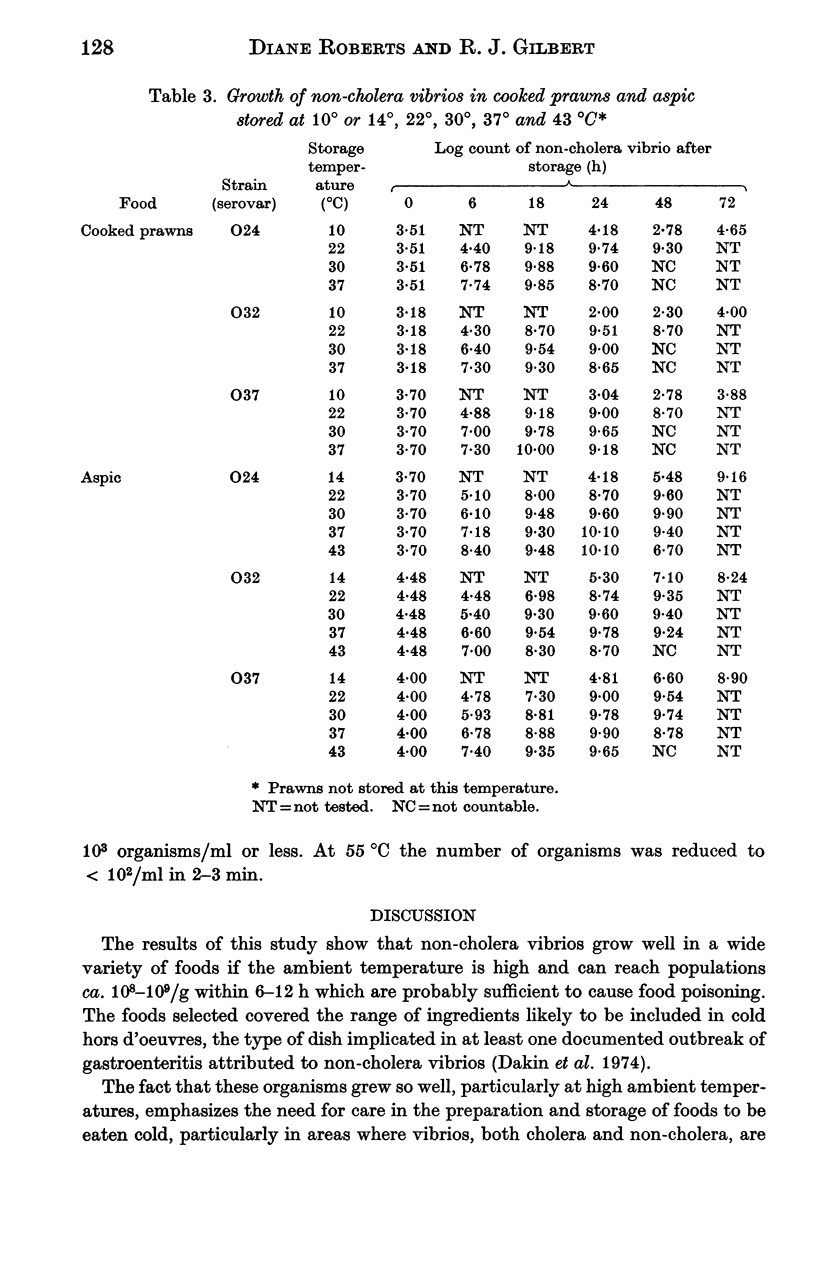
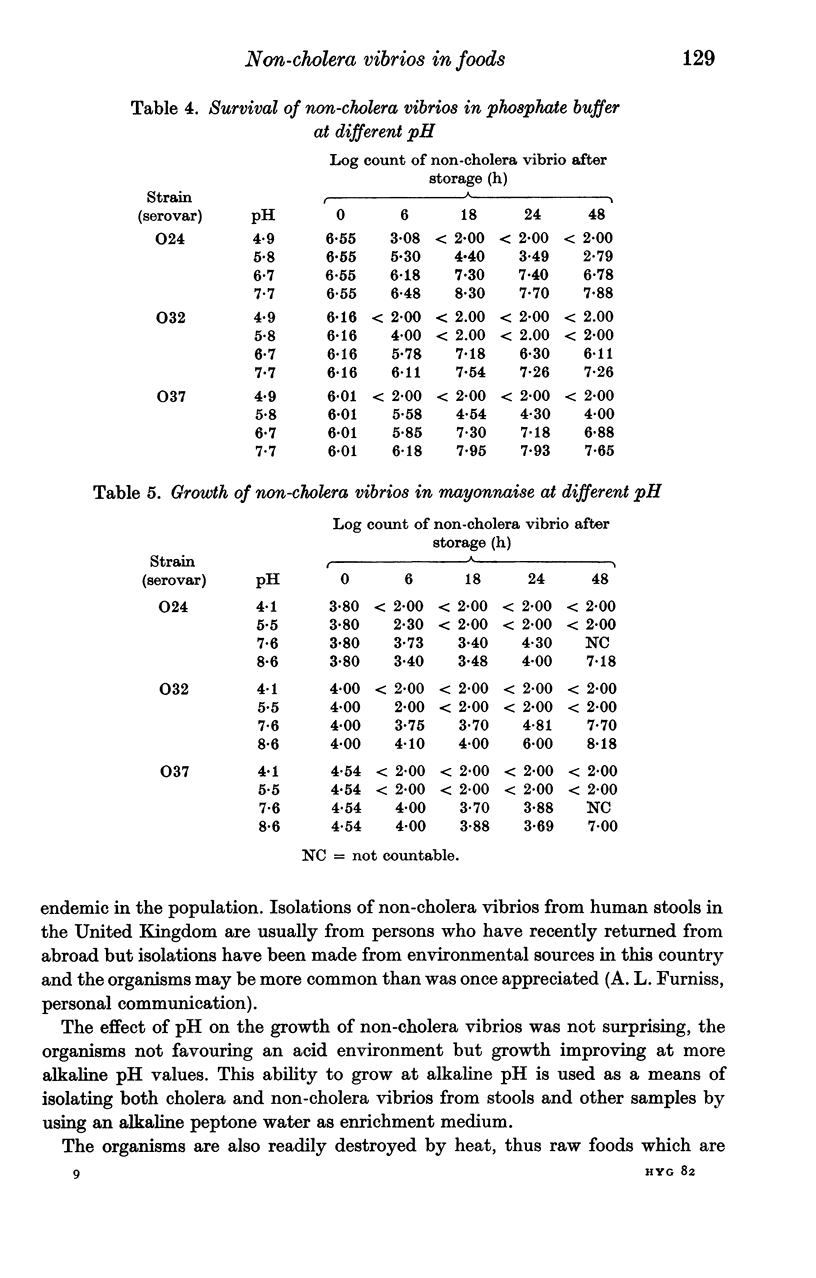
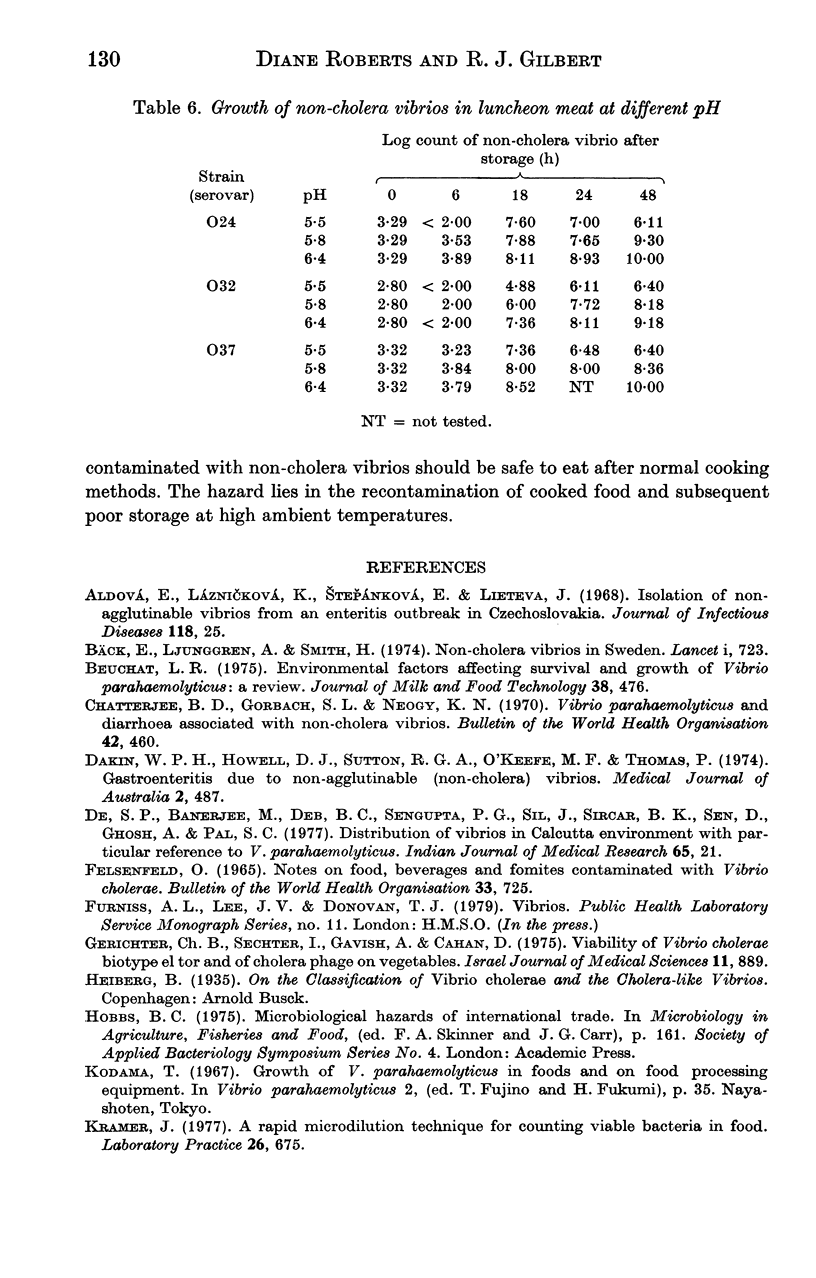
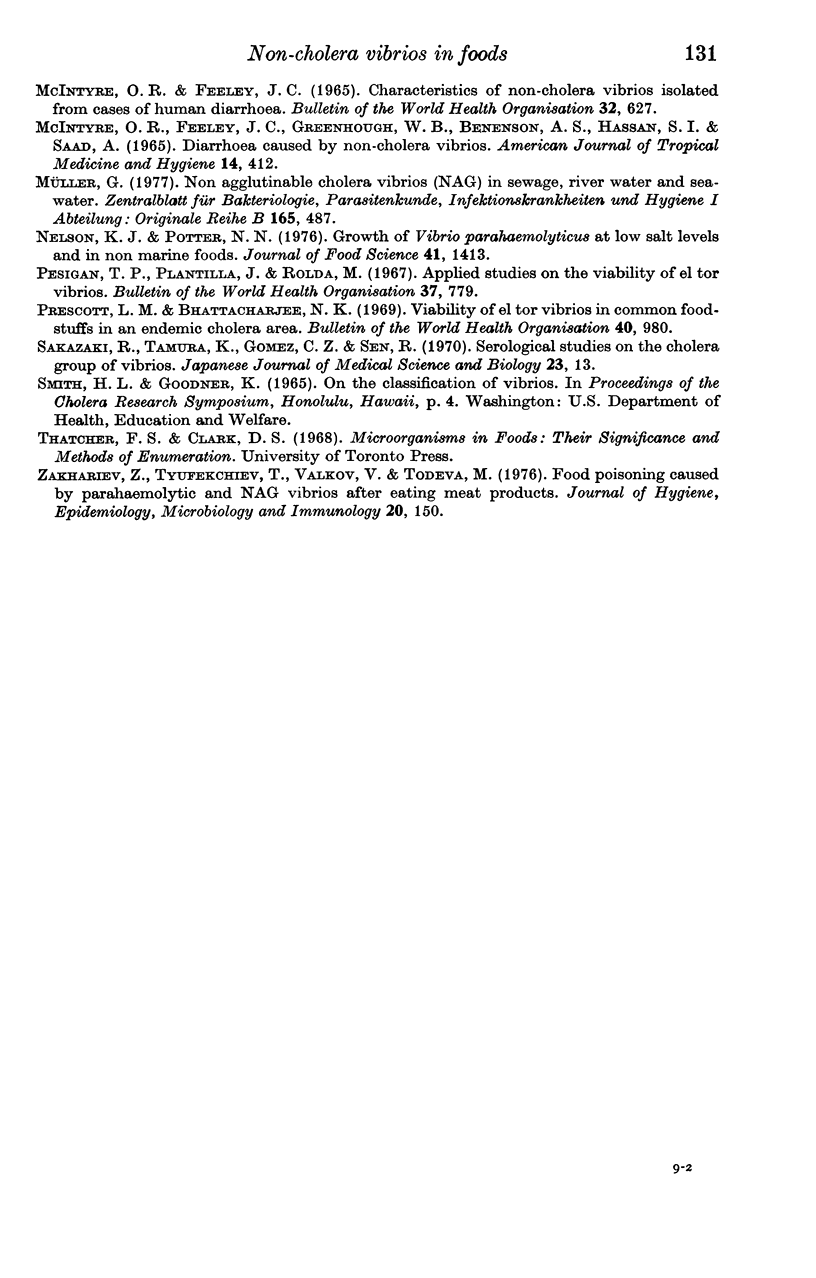
Selected References
These references are in PubMed. This may not be the complete list of references from this article.
- Bäck E., Ljunggren A., Smith H., Jr Non-cholera Vibrios in Sweden. Lancet. 1974 Apr 20;1(7860):723–724. doi: 10.1016/s0140-6736(74)92921-3. [DOI] [PubMed] [Google Scholar]
- Chatterjee B. D., Gorbach S. L., Neogy K. N. Vibrio parahaemolyticus and diarrhoea associated with non-cholera vibrios. Bull World Health Organ. 1970;42(3):460–463. [PMC free article] [PubMed] [Google Scholar]
- Dakin W. P., Howell D. J., Sutton R. G., O'Keefe M. F., Thomas P. Gastroenteritis due to non-agglutinable (non-cholera) vibrios. Med J Aust. 1974 Sep 28;2(13):487–490. doi: 10.5694/j.1326-5377.1974.tb70935.x. [DOI] [PubMed] [Google Scholar]
- Felsenfeld O. Notes on food, beverages and fomites contaminated with Vibrio cholerae. Bull World Health Organ. 1965;33(5):725–734. [PMC free article] [PubMed] [Google Scholar]
- Gerichter C. B., Sechter I., Gavish A., Cahan D. Viability of Vibrio cholerae biotype El Tor and of cholera phage on vegetables. Isr J Med Sci. 1975 Sep;11(9):889–895. [PubMed] [Google Scholar]
- Kramer J. A rapid microdilution technique for counting viable bacteria in food. Lab Pract. 1977 Sep;26(9):675–676. [PubMed] [Google Scholar]
- MCINTYRE O. R., FEELEY J. C., GREENOUGH W. B., 3rd, BENENSON A. S., HASSAN S. I., SAAD A. DIARRHEA CAUSED BY NON-CHOLERA VIBRIOS. Am J Trop Med Hyg. 1965 May;14:412–418. doi: 10.4269/ajtmh.1965.14.412. [DOI] [PubMed] [Google Scholar]
- McIntyre O. R., Feeley J. C. Characteristics of non-cholera Vibrios isolated from cases of human diarrhoea. Bull World Health Organ. 1965;32(5):627–632. [PMC free article] [PubMed] [Google Scholar]
- Pesigan T. P., Plantilla J., Rolda M. Applied studies on the viability of El Tor vibrios. Bull World Health Organ. 1967;37(5):779–786. [PMC free article] [PubMed] [Google Scholar]
- Prescott L. M., Bhattacharjee N. K. Viability of El Tor vibrios in common foodstuffs found in an endemic cholera area. Bull World Health Organ. 1969;40(6):980–982. [PMC free article] [PubMed] [Google Scholar]
- Sakazaki R., Tamura K., Gomez C. Z., Sen R. Serological studies on the cholera group of vibrios. Jpn J Med Sci Biol. 1970 Feb;23(1):13–20. doi: 10.7883/yoken1952.23.13. [DOI] [PubMed] [Google Scholar]
- Zakhariev Z., Tyufekchiev T., Valkov V., Todeva M. Food poisoning caused by parahaemolytic and NAG vibrios after eating meat products. J Hyg Epidemiol Microbiol Immunol. 1976;20(2):150–156. [PubMed] [Google Scholar]


